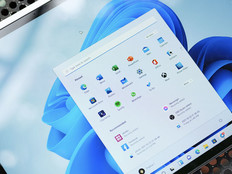What Is a Computerized Maintenance Management System?
Also known as enterprise asset management software, CMMS brings together a number of key technologies to automate workflow.
Barcode scanners help track inventory, while Internet of Things sensors monitor the health of diverse systems, from HVAC to power plants. Scheduling software tracks the timing of routine maintenance, while ticketing systems keep work orders moving.
RELATED: How colleges use IoT to save money on HVAC and other facilities.
“This data already exists on college campuses, but it has very rarely been aggregated into a single point,” says Mark Santolucito, a computer science professor at Barnard College of Columbia University. “The big advancement now is that all the data is coming together in one place, in a system that’s been engineered for the end user. That gives us greater insight into how operations are working: We can see a visualization of how our systems are running.”
Major vendors in the space include Oracle, IBM and SAP.
A University of Kansas white paper describes the basic functions of a typical CMMS, which include equipment tracking, management of preventive maintenance tasks, coordination of work orders, and management of parts, inventory and purchasing.
“A properly implemented CMMS will improve both efficiency and customer satisfaction,” the authors note.
How Does a CMMS Work?
Rooted in powerful database software, a CMMS is essentially an organizational tool. It can pull together information on equipment and processes, ensuring maintenance crews are working in support of the right tasks at the right time.
“You can put a tag on every piece of equipment that comes in and out of your inventory,” Santolucito says. “And you can track operations, things like power management down to an individual room: How much power is every room using? What is the bandwidth usage for every dorm room, for every router on campus? It is very wide-reaching.”
Juliana Beauvais, a research manager with IDC’s enterprise applications management and smart facilities team, says CMMS enables universities to proactively take care of maintenance needs in a number of key areas. She points to:
- Reactive maintenance: “This is the work orders, ticketing — an ability to say that something is broken. Most CMMS applications have a requester mobile app or portal of some kind where people can submit those requests,” she says. “Nowadays, they can also attach photos or video or tag a location, and then receive some communication throughout the process to show that it’s being fixed.”
- Preventive maintenance: “This is about managing scheduled work and inspection rounds, such as inspecting your fire extinguishers at all locations monthly or replacing air filters every quarter,” Beauvais says. “The CMMS will keep track of all of that. It will create the schedules, and the work orders will be automatically generated and assigned to the right people.”
- Condition-based maintenance: “Maintenance has traditionally been very time-based: every month, every quarter. Universities may find they are spending money on parts and labor to do things that don’t really need to be done yet, or they’re underservicing something that is used more frequently and could use more attention,” she says. “Now, these organizations are moving to condition-based maintenance. The maintenance and facility teams start collecting data about the runtime, usage and condition to conduct maintenance based on the actual data rather than having a technician just making the rounds.”
MORE ON EDTECH: How can metered consumption help higher ed save money?
With condition-based maintenance, colleges have a way to get ahead of the need, anticipating future repairs and related expenses.
“You’re able to run machine learning algorithms and apply artificial intelligence to say that based on the data right now, these assets and equipment are at the highest risk of failing soon,” Beauvais says. “Then you can make a decision ahead of time — maybe make a capital planning decision to replace something or perform maintenance to prevent that failure and that downtime from occurring.”
What Are the Benefits of CMMS for Universities and Colleges?
CMMS enables higher education administrators to take a more proactive approach to maintenance.
“It can apply to things like security and compliance, for example,” Panetta says. “The elevator has to be inspected every so often, and this allows us to be proactive to make sure it gets done. The services are scheduled well in advance of expiration dates for the certification. This system would track all of those assets and ensure those inspections happen in a timely way.”
CMMS also enables maintenance teams to make better use of their time and talents. “You’re getting insight into pipelines, the workflows, where things may be getting lost in the system and where they could be optimized,” Santolucito says. “When it comes to maintenance, you have to understand what’s going on in your systems to optimize your management of those systems.”











